Assessment of the Rheological and Mechanical Properties of Geopolymer Concrete Comprising Fly Ash and Fluid Catalytic Cracking Residue as Aluminosilicate Precursor
Abstract
Featured Application
Abstract
1. Introduction
2. Materials and Experimental Methods
2.1. Materials
2.2. Mixture Proportioning
2.3. Specimen Preparation
2.4. Test Methods
3. Results and Discussion
3.1. Rheological Properties of Geopolymer Concrete
3.2. Mechanical Properties of Hardened Geopolymer Concrete
3.3. Microstructures of Geopolymer Concrete
4. Conclusions
- With low rheological properties such as yield stress and plastic viscosity, fly ash-based geopolymer concrete showed better workability compared to specimens comprising FCC residue. With the presence of large and angular-shaped FCC residue particles, fresh geopolymer concrete containing both fly ash and FCC residue showed up to 12% and 39% higher yield stress and plastic viscosity compared to that consisting of only fly ash. Therefore, for the incorporation of FCC residue into geopolymer concrete, there was a need for extra alkali liquid to maintain similar workability to fly ash-based geopolymer concrete.
- The 7-day compressive strength, elastic modulus, and flexural strength of geopolymer concrete investigated in this study varied within 10–26 MPa, 12.3–21.3 GPa, and 0.9–2.8 MPa, with percentages of FCC residue content ranging from 0–100% by mass as replacement of fly ash. In the case of AL:GS ratios of 0.40 and 0.50, mechanical properties (i.e., compressive strength, elastic modulus, and flexural strength) of geopolymer concrete decreased with an increase in FCC residue content. Meanwhile, this trend was opposite with AL:GS ratio of 0.65 where geopolymer performance increased with an increase in FCC residue content. Apart from the mixture with AL:GS = 0.65, with partial replacement of fly ash, FCC residue with large and angular-shaped particles created more voids inside the concrete structure and resulted in mechanical properties reduction.
- SEM observations showed that the microstructure of geopolymer concrete consisting of FCC residue was more porous than fly ash-based geopolymer concrete, leading to reduced compressive strength.
- XRD patterns of geopolymer concrete revealed that with the replacement of FCC residue, final products from the geopolymerization of geopolymer concrete containing FCC residue were not much different compared to fly ash-based geopolymer concrete.
Author Contributions
Funding
Institutional Review Board Statement
Informed Consent Statement
Data Availability Statement
Conflicts of Interest
References
- Davidovits, J. Synthesis of New High Temperature Geopolymers for Reinforced Plastics-Composites, SPE PACTEC 79 Society of Plastic Engineers; Brookfield Center: Coasta Mesa, CA, USA, 1979; pp. 151–154. [Google Scholar]
- Gomes, K.C.; Carvalho, M.; de Diniz, D.; de Abrantes, R.C.; Branco, M.A.; de Carvalho, P.R.O. Carbon emissions associated with two types of foundations: CP-II Portland cement-based composite vs. geopolymer concrete. Rev. Mater. 2019, 24. [Google Scholar] [CrossRef]
- Nguyen, K.T.; Ahn, N.; Le, T.A.; Lee, K. Theoretical and experimental study on mechanical properties and flexural strength of fly ash-geopolymer concrete. Constr. Build. Mater. 2016, 106, 65–77. [Google Scholar] [CrossRef]
- Nazari, A.; Bagheri, A.; Riahi, S. Properties of geopolymer with seeded fly ash and rice husk bark ash. Mater. Sci. Eng. A 2011, 528, 7395–7401. [Google Scholar] [CrossRef]
- Ma, C.K.; Awang, A.Z.; Omar, W. Structural and material performance of geopolymer concrete: A review. Constr. Build. Mater. 2018, 186, 90–102. [Google Scholar] [CrossRef]
- Nguyen, K.T.; Le, T.A.; Lee, K. Evaluation of the mechanical properties of sea sand-based geopolymer concrete and the corrosion of embedded steel bar. Constr. Build. Mater. 2018, 169, 462–472. [Google Scholar] [CrossRef]
- Okoye, F.N.; Prakash, S.; Singh, N.B. Durability of fly ash based geopolymer concrete in the presence of silica fume. J. Clean. Prod. 2017. [Google Scholar] [CrossRef]
- Castel, A.; Foster, S.J.; Ng, T.; Sanjayan, J.G.; Gilbert, R.I. Creep and drying shrinkage of a blended slag and low calcium fly ash geopolymer Concrete. Mater. Struct. Constr. 2016. [Google Scholar] [CrossRef]
- Zhuang, H.J.; Zhang, H.Y.; Xu, H. Resistance of geopolymer mortar to acid and chloride attacks. Procedia Eng. 2017, 210, 126–131. [Google Scholar] [CrossRef]
- Luukkonen, T.; Abdollahnejad, Z.; Yliniemi, J.; Kinnunen, P.; Illikainen, M. One-part alkali-activated materials: A review. Cem. Concr. Res. 2018, 103, 21–34. [Google Scholar] [CrossRef]
- Gray, D.L. Decrease in Fly Ash Spurring Innovation Within Construction Materials Industry. Nat. Gas Electr. 2019, 35, 23–29. [Google Scholar] [CrossRef]
- Sifton, B.; MacKenzie, B. 2020 to 2070 and Beyond: Transitioning from Production to Post-Production Coal Ash Use. Ash at Work. 2019, pp. 38–40. Available online: https://www.google.com/url?sa=t&rct=j&q=&esrc=s&source=web&cd=&ved=2ahUKEwiD7v-Tu83vAhVWA4gKHdmYCrcQFjAAegQIBRAD&url=https%3A%2F%2Fstatic1.squarespace.com%2Fstatic%2F583f6b6de4fcb526208860e0%2Ft%2F5cc8f6c49140b793dec8d9bb%2F1556674269458%2F2020%2Bto%2B2070%2Band%2BBeyond.pdf&usg=AOvVaw1jMXup51MV6WBgFBdWZBoA (accessed on 6 March 2021).
- Alberici, S.; de Beer, J.G.; van der Hoorn, I.; Staats, M. Staats Maarten. Department of Energy and Climate Change, Fly ash and blast furnace slag for cement manufacturing. BEIS Res. Pap. 2017, 19, 1–34. [Google Scholar]
- Font, A.; Borrachero, M.V.; Soriano, L.; Monzó, J.; Payá, J. Geopolymer eco-cellular concrete (GECC) based on fluid catalytic cracking catalyst residue (FCC) with addition of recycled aluminium foil powder. J. Clean. Prod. 2017, 168, 1120–1131. [Google Scholar] [CrossRef]
- Rodríguez, E.D.; Bernal, S.A.; Provis, J.L.; Gehman, J.D.; Monzó, J.M.; Payá, J.; Borrachero, M.V. Geopolymers based on spent catalyst residue from a fluid catalytic cracking (FCC) process. Fuel 2013, 109, 493–502. [Google Scholar] [CrossRef]
- Ruiz, G.; Aguilar, R.; Nakamatsu, J.; Kim, S. Synthesis of a Geopolymer Binders Using Spent Fluid Catalytic Cracking (FCC) Catalyst. IOP Conf. Ser. Mater. Sci. Eng. 2019, 660. [Google Scholar] [CrossRef]
- Tashima, M.M.; Akasaki, J.L.; Castaldelli, V.N.; Soriano, L.; Monzó, J.; Payá, J.; Borrachero, M.V. New geopolymeric binder based on fluid catalytic cracking catalyst residue (FCC). Mater. Lett. 2012, 80, 50–52. [Google Scholar] [CrossRef]
- Department for International Trade, Vietnam Energy Sector. 2019. Available online: https://www.ukabc.org.uk/wp-content/uploads/2019/07/Energy-Sector-Update-April-2019.pdf (accessed on 6 March 2021).
- Clark, Z.; Rose, S. Section 3—UK Oil and Oil Products April to June 2020. 2020; pp. 17–23. Available online: https://assets.publishing.service.gov.uk/government/uploads/system/uploads/attachment_data/file/923057/Energy_Trends_June_2020.pdf (accessed on 6 March 2021).
- U.S. Energy Information Administration. Short-Term Energy Outlook October 2020; EIA: Washington, DC, USA, 2020.
- Ferella, F.; D’Adamo, I.; Leone, S.; Innocenzi, V.; de Michelis, I.; Vegliò, F. Spent FCC E-Cat: Towards a circular approach in the oil refining industry. Sustainability 2019, 11, 113. [Google Scholar] [CrossRef]
- Payá, J.; Monzó, J.M.; Borrachero, M.V.; Velázquez, S. Pozzolanic reaction rate of fluid catalytic cracking catalyst residue (FC3R) in cement pastes. Adv. Cem. Res. 2013, 25, 112–118. [Google Scholar] [CrossRef]
- Castellanos, N.T.; Agredo, J.T.; de Gutiérrez, R.M. Performance under sulfate attack of concrete additioned with fluid catalytic cracking catalyst residue (FCC) and metakaolin (MK). Eng. Res. Mag. 2013, 33, 18–22. [Google Scholar]
- Zainab, S.A.K.; Zainab, A.M.; Jafer, H.; Dulaimi, A.; Atherton, W. The effect of using fluid catalytic cracking catalyst residue (FC3R) “as a cement replacement in soft soil stabilisation”. Int. J. Civ. Eng. Technol. 2018, 9, 522–533. [Google Scholar]
- Cosa, J.; Soriano, L.; Borrachero, M.V.; Reig, L.; Payá, J.; Monzó, J.M. Influence of addition of fluid catalytic cracking residue (FCC) and the SiO2 concentration in alkali-activated ceramic sanitary-ware (CSW) binders. Minerals 2018, 8, 123. [Google Scholar] [CrossRef]
- Liang, M.; Liu, S.; Fan, W.; Xin, X.; Luo, H.; Xing, B. Rheological and chemical characterization of deoiled asphalt modified with FCC slurry. Mater. Struct. Constr. 2016, 49, 3607–3617. [Google Scholar] [CrossRef]
- Zhu, J.F.; Zhang, L.; Xu, T.; Zhang, Z.J.; Liu, X.Z.; Wang, Z. Quantificational characterization of microstructural parameters of cemented carbides based on ImageJ software. Mater. Sci. Eng. Powder Metall. 2015, 20, 26–31. [Google Scholar]
- Pavani, H.P.; Tadepalli, T.; Agrawal, A.K. Estimation of porosity and pore distribution in Hydrated Portland cement at elevated temperatures using synchrotron micro tomography. J. Adv. Concr. Technol. 2019. [Google Scholar] [CrossRef]
- Li, F.; Hu, R.; Yu, H.; Yang, J. Application of ImageJ in the rock thin section image analysis: The separation and quantitative calculation of crystal-glass two phases. SDRP J. Earth Sci. Environ. Stud. 2019. [Google Scholar] [CrossRef]
- Davidovits, J. Geopolymer Chemistry and Applications, 3rd ed.; Geopolymer Institute: Aisne, France, 2011. [Google Scholar]
- Ferraris, C.F.; de Larrard, F. Testing and Modelling of Fresh Concrete Rheology; NIST: Gaithersburg, MD, USA, 1998; Volume 61. [CrossRef]
- de Castro, A.L.; Liborio, J.B.L. Initial rheological description of high performance concretes. Mater. Res. 2006, 9, 405–410. [Google Scholar] [CrossRef][Green Version]
- ASTM C469. Standard Test Method for Static Modulus of Elasticity and Poisson’s Ratio of Concrete in Compression; ASTM: West Conshohocken, PA, USA, 2014. [Google Scholar] [CrossRef]
- ASTM C39. Standard Test Method for Compressive Strength of Cylindrical Concrete Specimens; ASTM: West Conshohocken, PA, USA, 2018. [Google Scholar]
- ASTM C78/C78M-18. Standard Test Method for Flexural Strength of Concrete (Using Simple Beam with Third-Point Loading); ASTM: West Conshohocken, PA, USA, 2018. [Google Scholar]
- Ekwulo, E.O.; Eme, D.B. Effect of Aggregate Gradation on Compressive Strength and Elastic Modulus of Cement Treated Aggregate Base Material for Highway Pavement. Int. Organ. Sci. Res. 2017, 7, 79–89. [Google Scholar]
- ACI Committee 363. State-of-the-Art Report on High-Strength Concrete. 1997. Available online: https://www.silicafume.org/pdf/reprints-363rtoc.pdf (accessed on 6 March 2021).
- CEB. CEB-FIP Model Code 2010. In Fib Model Code for Concrete Structures 2010; CEB: Lausanne, Switzerland, 2013. [Google Scholar] [CrossRef]
- Hardjito, D.; Rangan, B.V. Development and Properties of Low-Calcium Fly Ash-Based Geopolymer Concrete; Curtin University of Technology: Bentley, Australia, 2005. [Google Scholar]
- Diaz-Loya, E.I.; Allouche, E.N.; Vaidya, S. Mechanical properties of fly-ash-based geopolymer concrete. ACI Mater. J. 2011, 108, 300–306. [Google Scholar] [CrossRef]
- Lee, N.K.; Lee, H.K. Setting and mechanical properties of alkali-activated fly ash/slag concrete manufactured at room temperature. Constr. Build. Mater. 2012, 47, 1201–1209. [Google Scholar] [CrossRef]
- Versaci, M.; Morabito, F.C. Image Edge Detection: A New Approach Based on Fuzzy Entropy and Fuzzy Divergence. Int. J. Fuzzy Syst. 2021. [Google Scholar] [CrossRef]
- Dhanachandra, N.; Chanu, Y.J. An image segmentation approach based on fuzzy c-means and dynamic particle swarm optimization algorithm. Multimed. Tools Appl. 2020, 79, 18839–18858. [Google Scholar] [CrossRef]


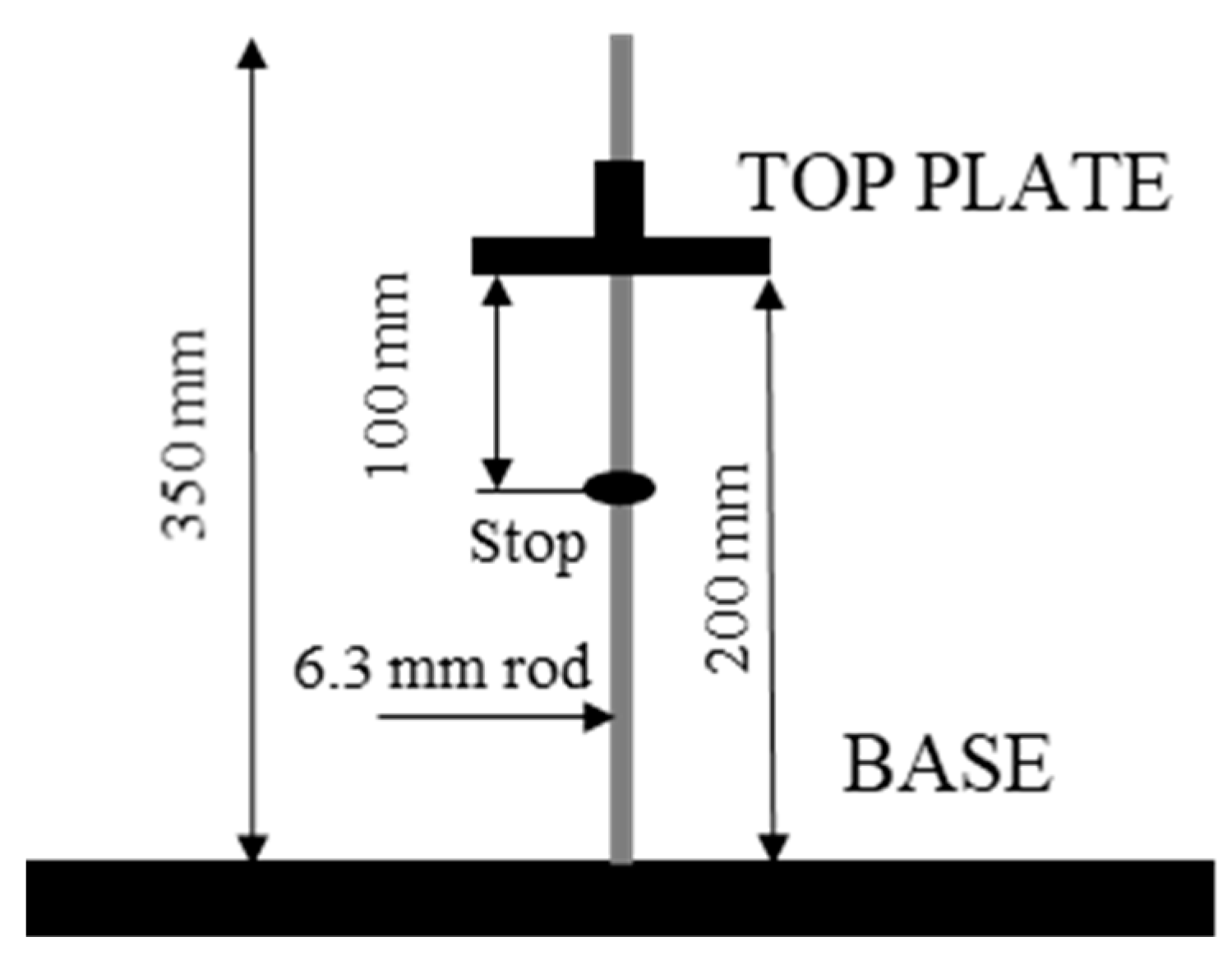
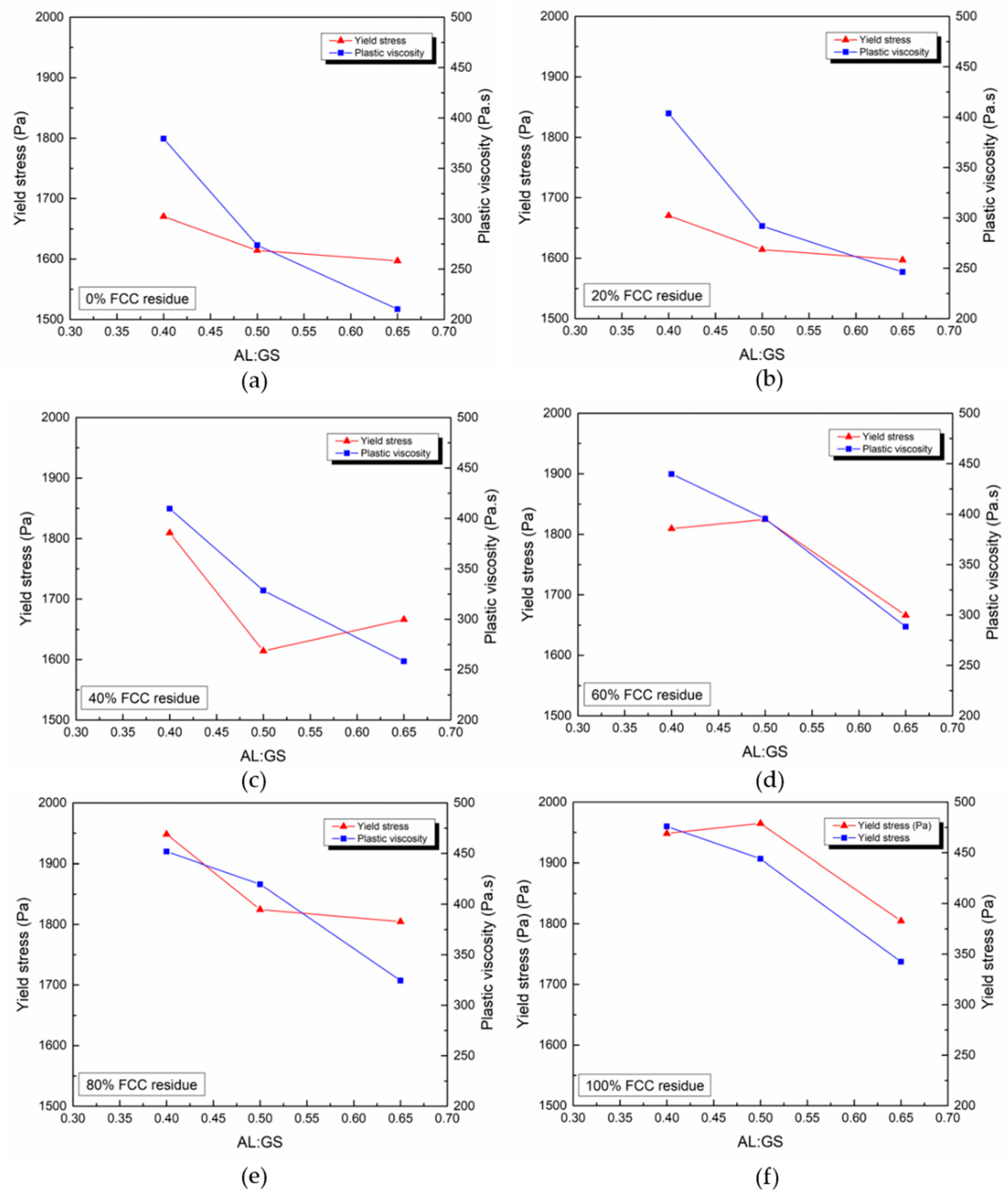
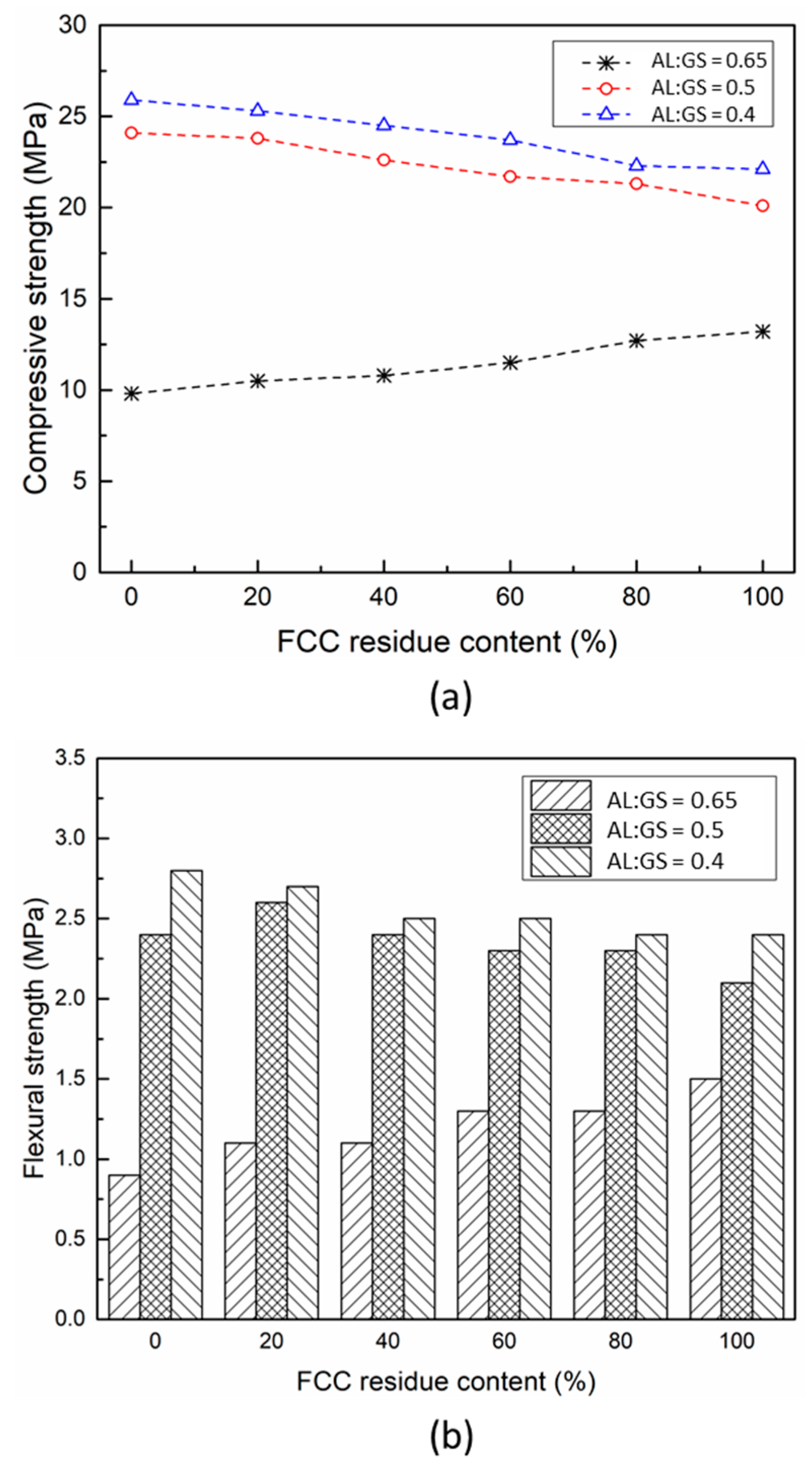
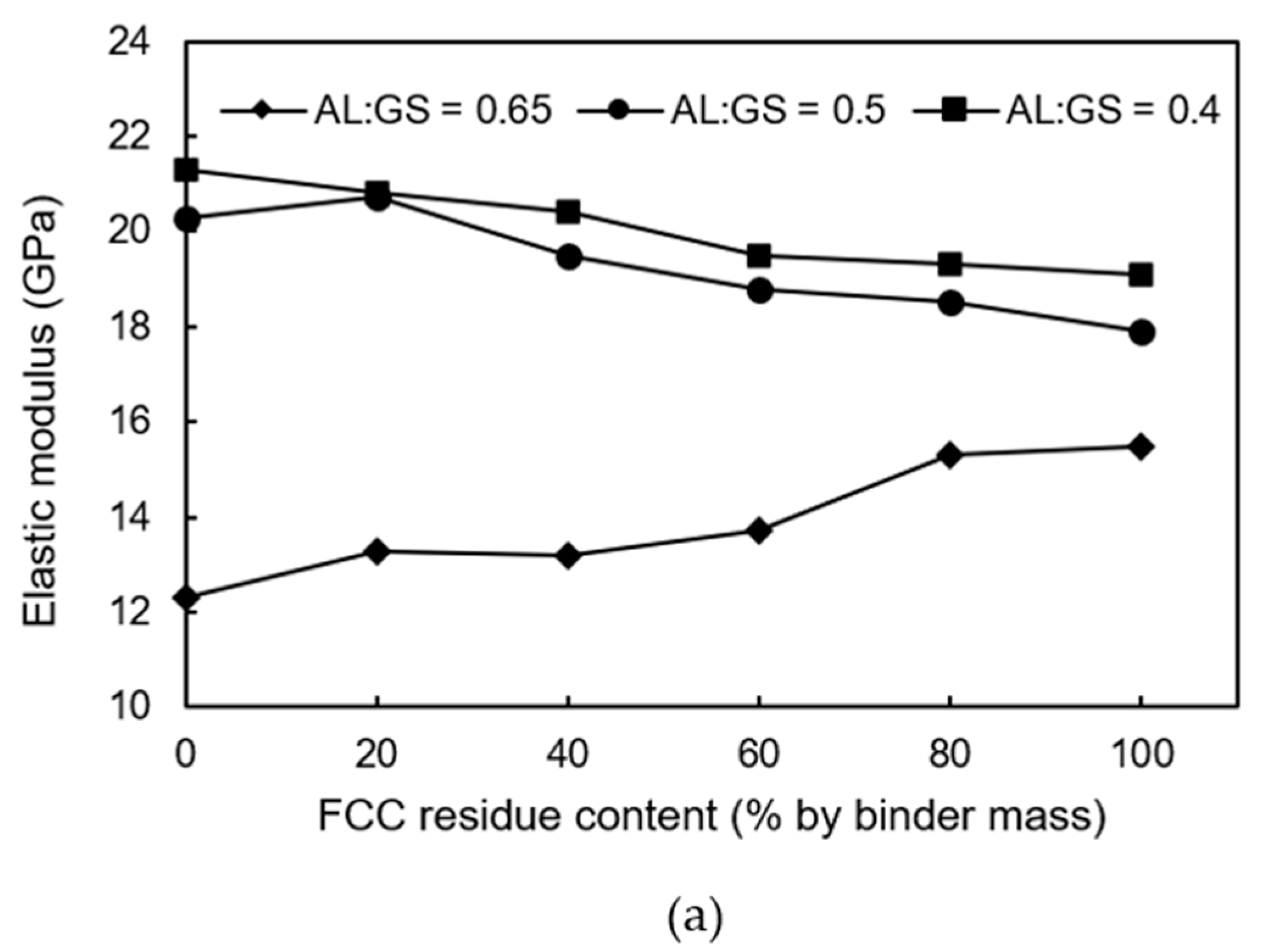

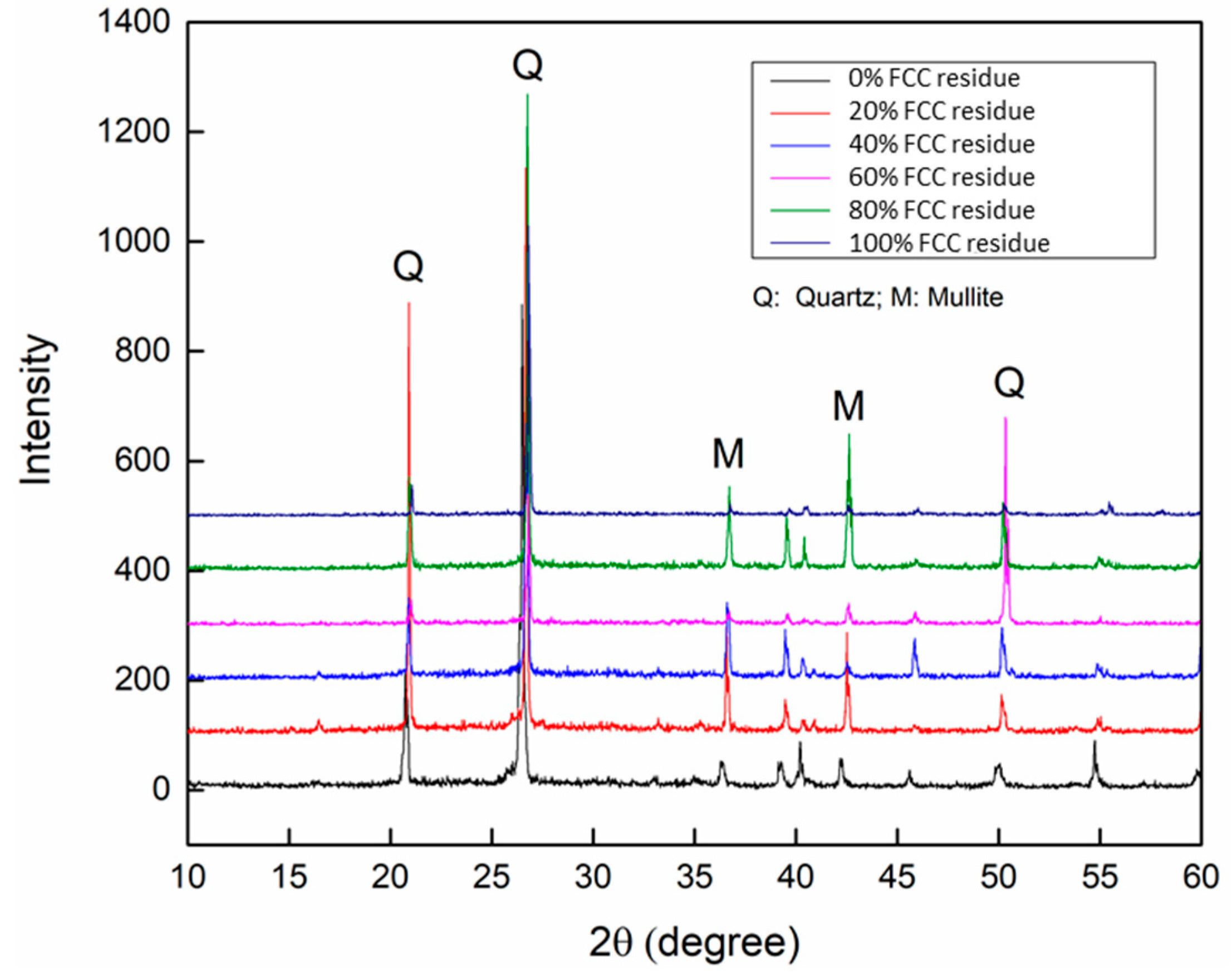
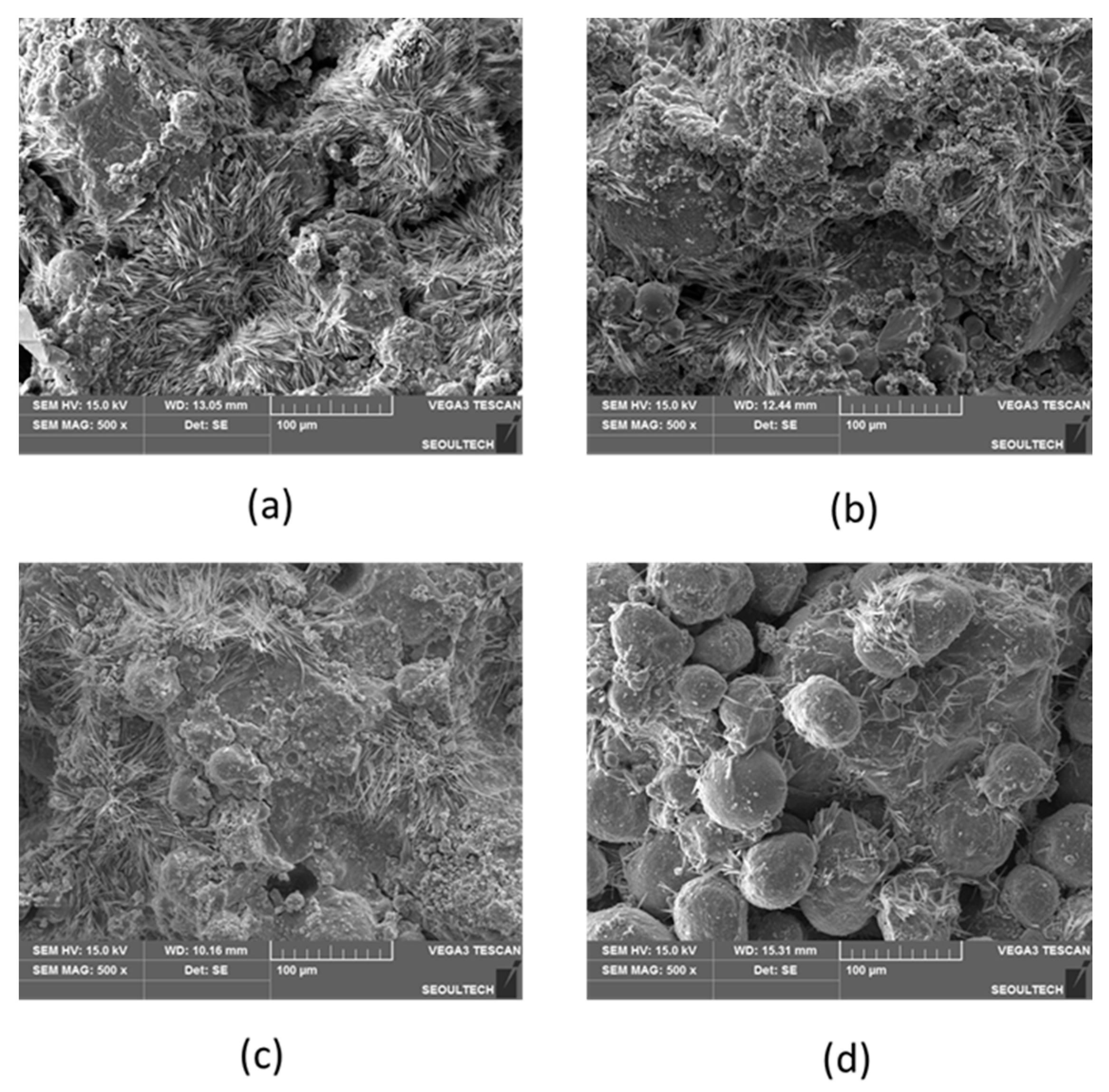
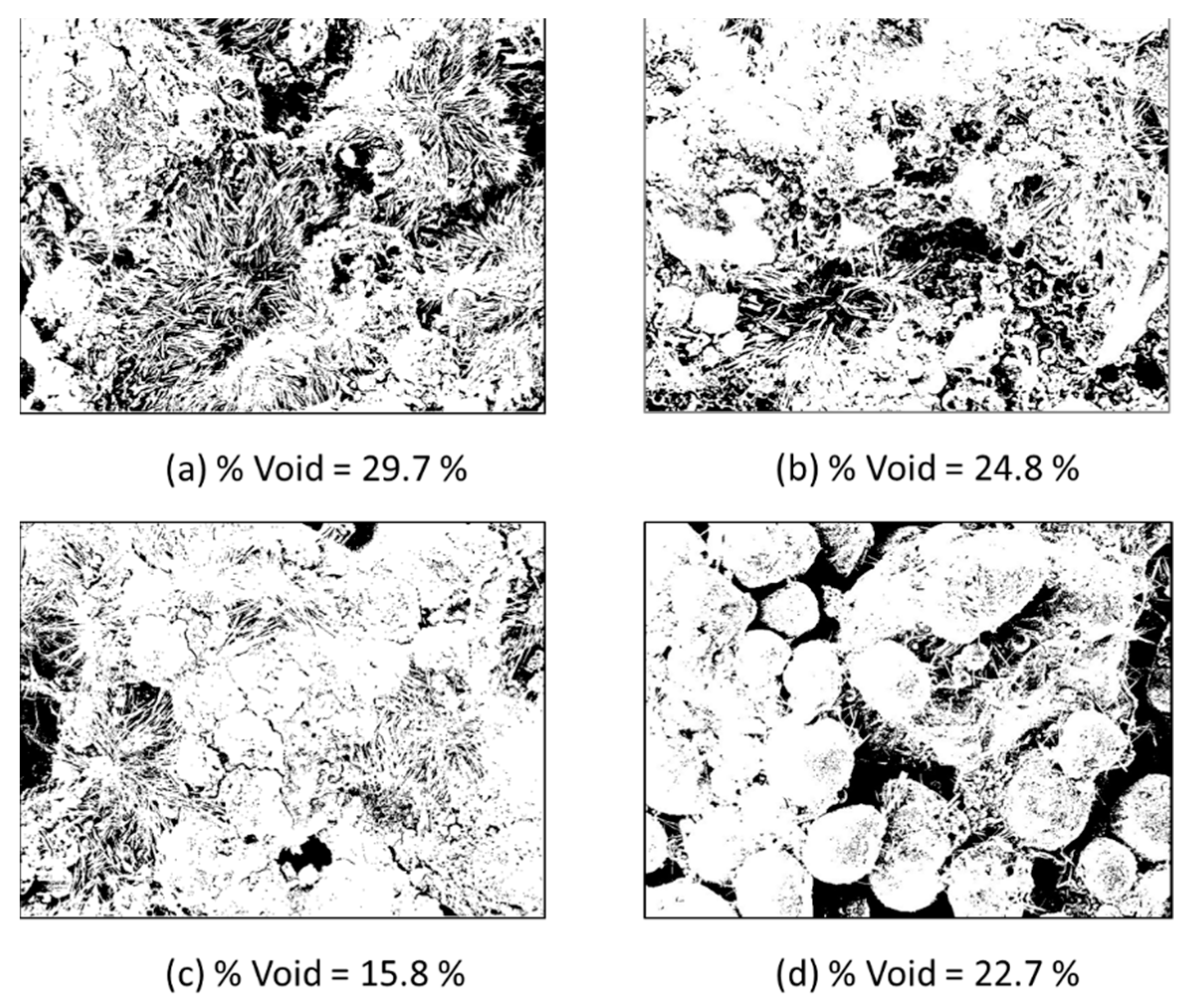
| Materials | SiO2 | Al2O3 | Fe2O3 | CaO | K2O & Na2O | MgO | SO3 | LOI * |
|---|---|---|---|---|---|---|---|---|
| Fly ash | 51.7 | 31.9 | 3.48 | 1.21 | 1.02 | 0.81 | 0.25 | 9.63 |
| FCC residue | 55 | 39 | 0.38 | 0.5 | 0.21 | - | <1 | - |
| Mix ID | Mix Design Parameters | Mass of Constituent Materials (kg) | ||||||
|---|---|---|---|---|---|---|---|---|
| AL:GS | FCC Residue (%) | CA | FA | Fly Ash | FCC Residue | Sodium Silicate | Sodium Hydroxide | |
| G1 | 0.65 | 0 | 1098 | 810 | 300 | 0 | 97.5 | 97.5 |
| G2 | 0.65 | 20 | 1098 | 810 | 240 | 60 | 97.5 | 97.5 |
| G3 | 0.65 | 40 | 1098 | 810 | 180 | 120 | 97.5 | 97.5 |
| G4 | 0.65 | 60 | 1098 | 810 | 120 | 180 | 97.5 | 97.5 |
| G5 | 0.65 | 80 | 1098 | 810 | 60 | 240 | 97.5 | 97.5 |
| G6 | 0.65 | 100 | 1098 | 810 | 0 | 300 | 97.5 | 97.5 |
| G7 | 0.5 | 0 | 1063 | 770 | 400 | 0 | 100 | 100 |
| G8 | 0.5 | 20 | 1063 | 770 | 320 | 80 | 100 | 100 |
| G9 | 0.5 | 40 | 1063 | 770 | 240 | 160 | 100 | 100 |
| G10 | 0.5 | 60 | 1063 | 770 | 160 | 240 | 100 | 100 |
| G11 | 0.5 | 80 | 1063 | 770 | 80 | 320 | 100 | 100 |
| G12 | 0.5 | 100 | 1063 | 770 | 0 | 400 | 100 | 100 |
| G13 | 0.4 | 0 | 950 | 760 | 500 | 0 | 100 | 100 |
| G14 | 0.4 | 20 | 950 | 760 | 400 | 100 | 100 | 100 |
| G15 | 0.4 | 40 | 950 | 760 | 300 | 200 | 100 | 100 |
| G16 | 0.4 | 60 | 950 | 760 | 200 | 300 | 100 | 100 |
| G17 | 0.4 | 80 | 950 | 760 | 100 | 400 | 100 | 100 |
| G18 | 0.4 | 100 | 950 | 760 | 0 | 500 | 100 | 100 |
Publisher’s Note: MDPI stays neutral with regard to jurisdictional claims in published maps and institutional affiliations. |
© 2021 by the authors. Licensee MDPI, Basel, Switzerland. This article is an open access article distributed under the terms and conditions of the Creative Commons Attribution (CC BY) license (http://creativecommons.org/licenses/by/4.0/).
Share and Cite
Le, T.A.; Le, S.H.; Nguyen, T.N.; Nguyen, K.T. Assessment of the Rheological and Mechanical Properties of Geopolymer Concrete Comprising Fly Ash and Fluid Catalytic Cracking Residue as Aluminosilicate Precursor. Appl. Sci. 2021, 11, 3032. https://doi.org/10.3390/app11073032
Le TA, Le SH, Nguyen TN, Nguyen KT. Assessment of the Rheological and Mechanical Properties of Geopolymer Concrete Comprising Fly Ash and Fluid Catalytic Cracking Residue as Aluminosilicate Precursor. Applied Sciences. 2021; 11(7):3032. https://doi.org/10.3390/app11073032
Chicago/Turabian StyleLe, Tuan Anh, Sinh Hoang Le, Thuy Ninh Nguyen, and Khoa Tan Nguyen. 2021. "Assessment of the Rheological and Mechanical Properties of Geopolymer Concrete Comprising Fly Ash and Fluid Catalytic Cracking Residue as Aluminosilicate Precursor" Applied Sciences 11, no. 7: 3032. https://doi.org/10.3390/app11073032
APA StyleLe, T. A., Le, S. H., Nguyen, T. N., & Nguyen, K. T. (2021). Assessment of the Rheological and Mechanical Properties of Geopolymer Concrete Comprising Fly Ash and Fluid Catalytic Cracking Residue as Aluminosilicate Precursor. Applied Sciences, 11(7), 3032. https://doi.org/10.3390/app11073032






